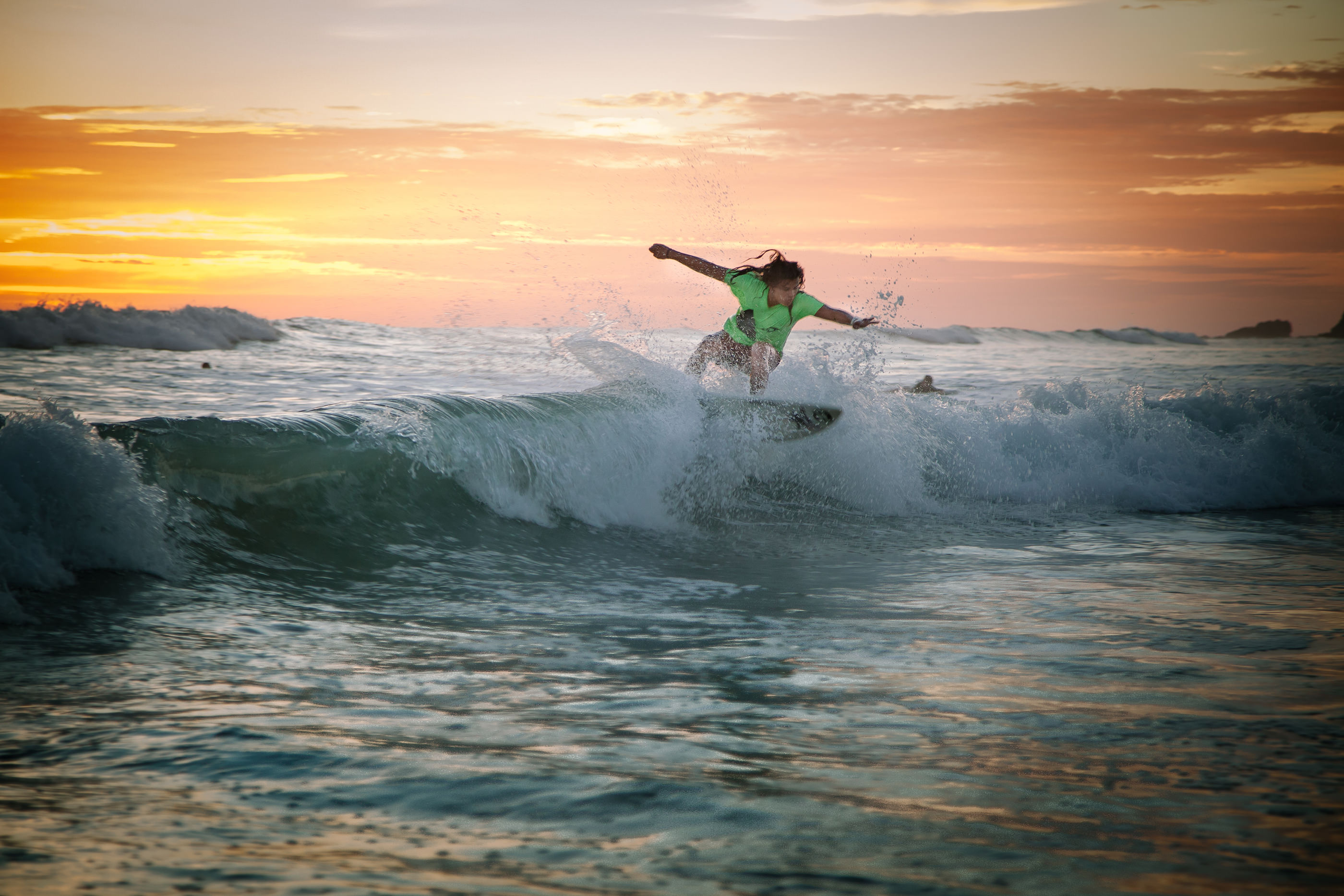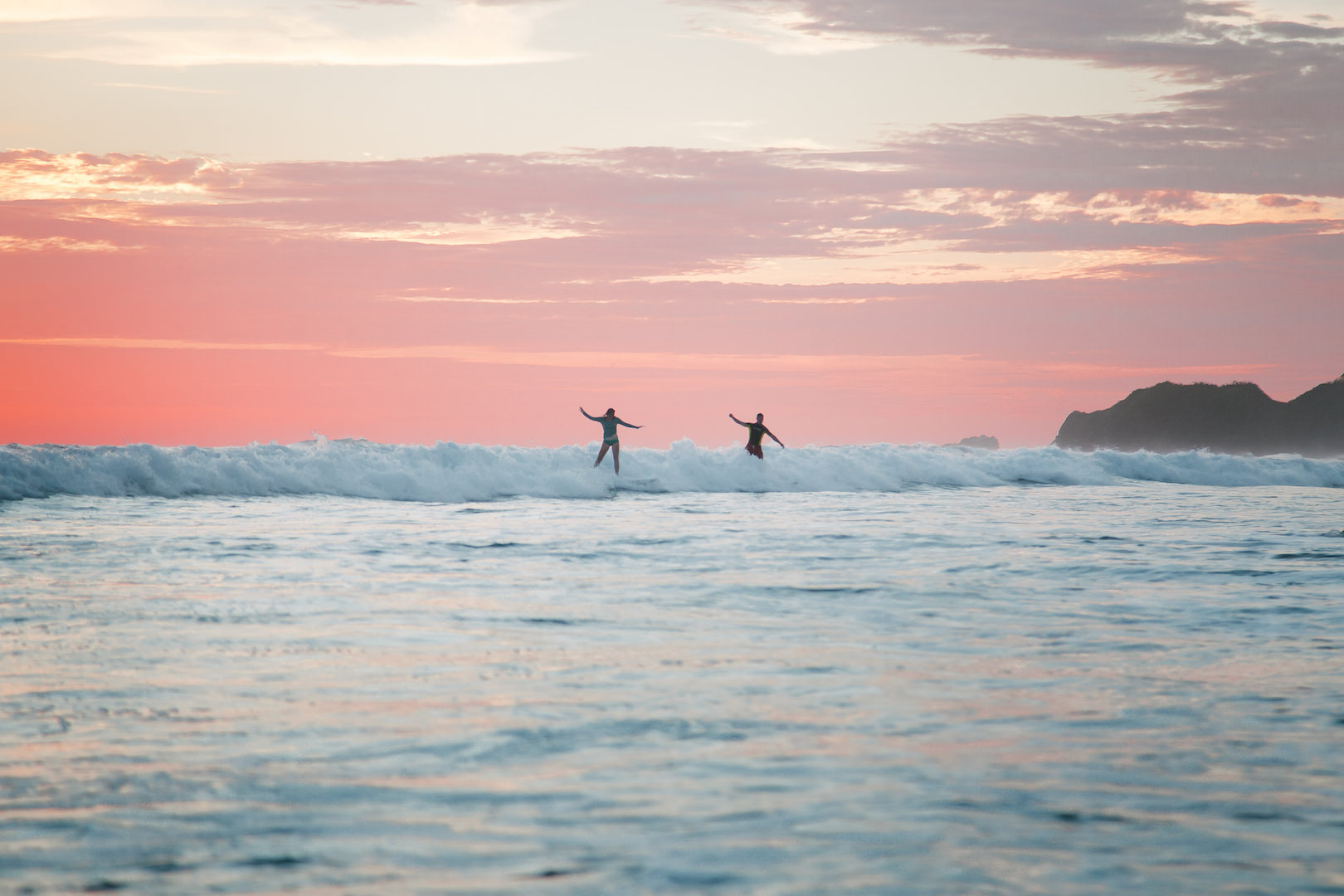
So you’ve mastered the basics: you can paddle and catch waves with ease, stand up and drop in and bottom turn. Now what? The next step is learning to create and maintain speed! Speed is one of the most important elements in surfing. Without it, you won’t be able to perform even the most basic moves and turns. It’s the same with skiing, snowboarding, or pretty much any board type of sport; speed is the key to maneuverability.
With that said, here are some helpful tips to surf faster:
Checking and Understanding the Waves
First things first! Before you hop in the water, you have to check the waves. Watching the waves and understanding the type of wave / break it is will certainly help you understand how to ride the actual wave. I almost always sit and watch waves for about 10 minutes, especially at new breaks I’ve never surfed before. By watching the waves and how they are breaking you can see where the “sections” that are faster come along while the wave is breaking, where it may close out, where it may soften or slow down, etc. Of course there is no substitute for actually riding the wave. At least seeing how it is breaking before you jump on them will help – especially with watching a few waves other surfers catch and seeing how they ride the wave to completion.
Bottom Turn – Stay High!
Your initial bottom turn is the key to your entire wave. By timing it right, staying low with a low center of gravity, with legs bent and coiled like a spring, you should release that “coil” spring in your legs to project yourself down the line. This will automatically thrust yourself down the line and high up on the face of the wave. That initial burst of speed is the catalyst for the rest of your wave. As they say in surfing, “Your bottom turn is EVERYTHING.” Once you have propelled yourself forward from that initial bottom turn and you find yourself on the upper third of the wave…this is where you will always reach the apex of speed on a wave.
Stay Close to the Pocket (“S” Turns)
Staying close to the energy source (the pocket) is a key factor in maintaining speed, for as the closer you are to the curl or epicenter of the waves power source the faster you will go. The wave will dictate what your next move is but in this little piece I’m going to explain how to keep your speed or if need be, even go faster. (I’ll cover slowing down / cutbacks at another time).
The classic “S” turn, or as we surfers say a lot “pumping down the line,” are terms for generating and keeping our board speed high. The “S” turn is really quite simple and I equate it to a coiled spring that contracts and expands. If you’ve ever watched a surf movie, or perhaps above average surfers at the beach, you notice this when the surfers are “pumping” or expanding and contracting like a coil to gain speed on a wave. While going high on the wave then low, then high, then low – ”pumping” their legs from a bent (contracted) to extended (expand) position in rapid succession – they are creating the speed needed to go faster down the line of the wave.
Keep Your Board Clean (and Fins)
Make sure to clean the bottom of your board. This will help you move faster on the water. Believe it or not but I see people all the time with wax marks on the bottom of their boards from boards laying on each other, or whatever other reason. Your fins also have a lot to do with speed, as does the design of your surfboard (yet another article topic coming soon).

Relax and Watch
I cannot emphasize to you how important it is to watch other surfers in the line up. This is a great way to see other people’s styles and also how they “read” the wave while surfing it. Of course this is also a great way to self-teach, too. Just relax and let the waves come to you. Like anything else, practice, practice, practice each maneuver until you have the confidence to know that you can execute whenever you need them. Aloha!

